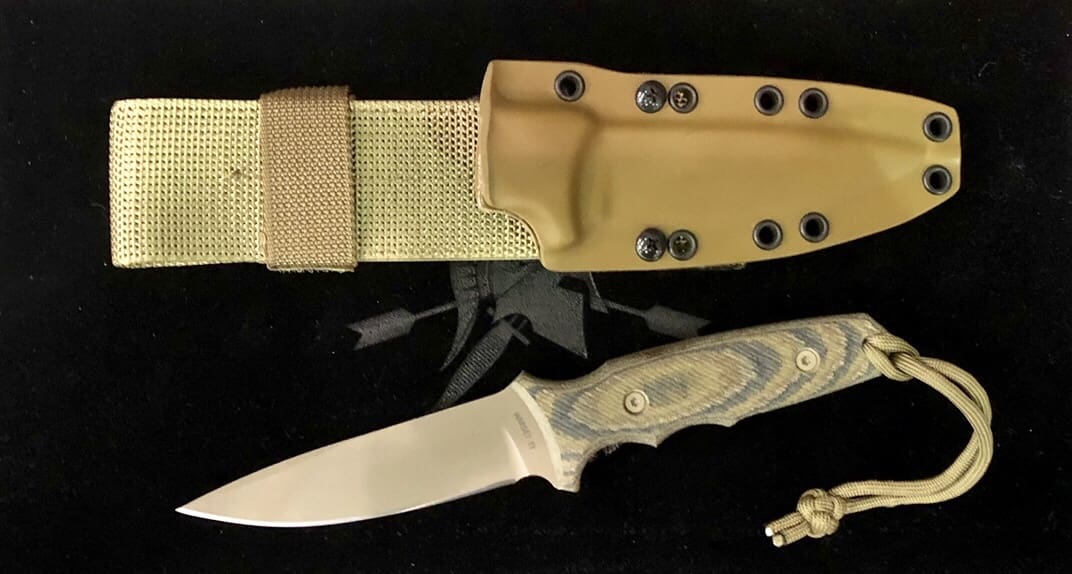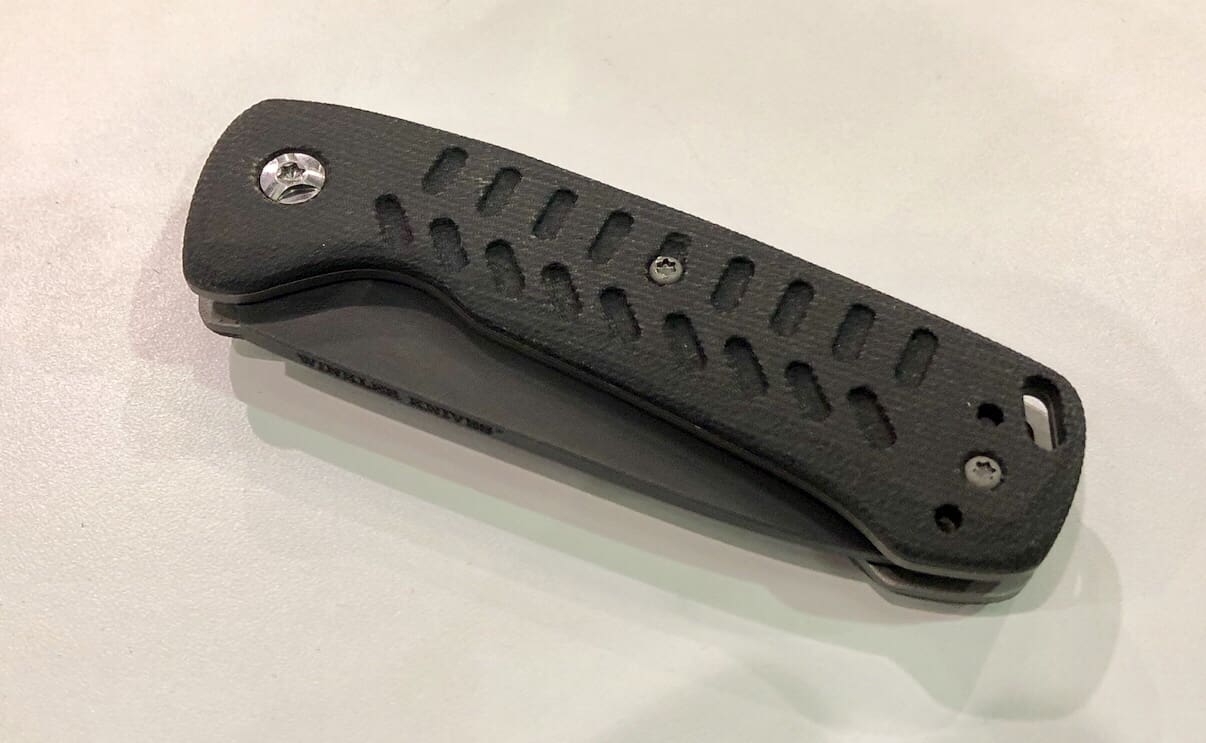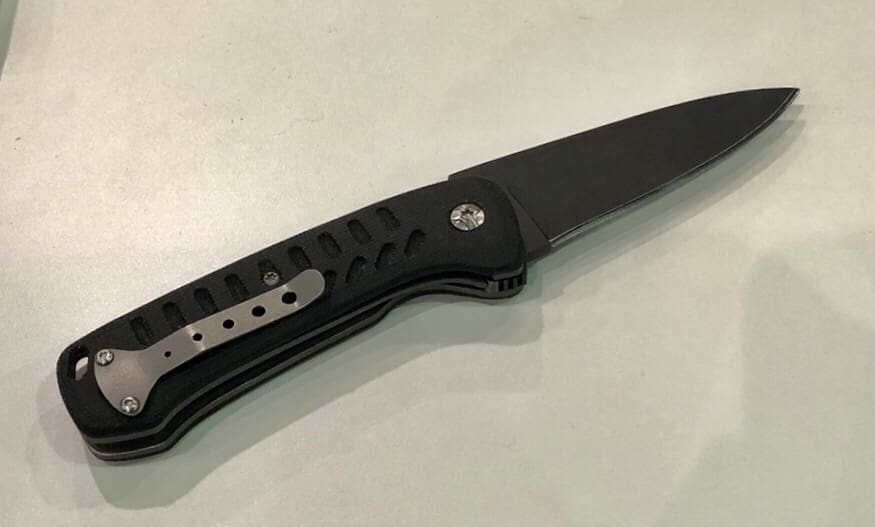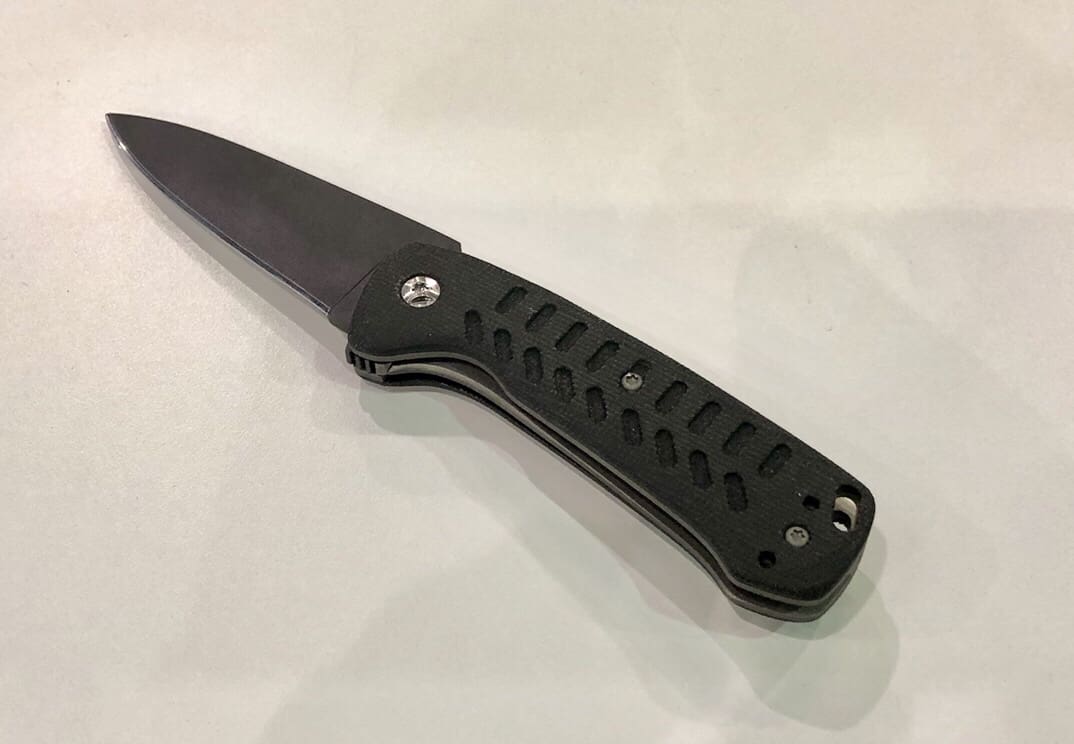Emerson Knives showed us their new Bulljack
Flipper and Mini CQC-7 Flipper.
June 1, 2018 (Redmond, WA) – B.E. Meyers & Co., Inc. will be attending the Ohio Tactical Officers Association Conference on June 4 – 8, 2018 at the Kalahari Resort & Convention Center in Sandusky, Ohio. This event includes a vendor show, as well as five days of training sessions for Law Enforcement Professionals coordinated by the OTOA Director of Training and B.E. Meyers & Co. Brand Ambassador John Chapman “Chappy” of Forge Tactical.
Guests are invited to visit B.E. Meyers & Co. at booth #220, where they will be showcasing their Modular Advanced Weapon Laser (MAWL®) series of weapon mounted IR/VIS laser pointers and illuminators; the IZLID® series of IR and SWIR pointers and Illuminators; and the GLARE® series green Hail and Warning/Ocular Interruption laser devices. B.E. Meyers & Co. Business Development Manager Chuck Vlasek will be available to answer questions and provide more information on the company’s products.
To schedule a meeting with Mr. Vlasek, please contact sales@bemeyers.com.
SAN DIEGO – June 1, 2018 – Cubic Corporation (NYSE: CUB) today announced the successful closing of its divestiture of the Cubic Global Defense (CGD) Services business to Valiant Integrated Services. Cubic received approximately $135 million cash at closing on a debt free, cash free basis, plus $3 million of contingent consideration tied to certain contract wins expected over the next 12 to 24 months.
“The close of our CGD Services business divestiture to Valiant is an important step for Cubic as we work to ensure we are best positioned to drive sustainable long-term value for our customers, employees and shareholders,” said Bradley H. Feldmann, chairman, president and chief executive officer of Cubic Corporation. “As we continue to reshape and strengthen our portfolio of businesses, we will focus on building market-leading positions where we can leverage our technological and thought leadership to provide innovation-driven solutions to our customers’ advantage.”
CGD Services is a non-Original Equipment Manufacturer (OEM) providing training, operations, intelligence, maintenance, technical and other support services to the U.S. government, its agencies and allied nations. CGD Services business had fiscal year 2017 revenue of $378 million and is comprised of approximately 3,500 employees working in 10 countries throughout the world.
JOB SUMMARY:
Primary role is to act as the Military and Law Enforcement Programs Lead of Advanced Weapons and Components. This position is responsible for the development and execution of all military, government agency and law enforcement programs.
Provides support to leadership in the development and launch of new products, compiles customer feedback, market data and delivers assessment of competitive and market intelligence.
ESSENTIAL DUTIES AND RESPONSIBILITIES
• Identifies new business opportunities in military and law enforcement markets.
• Assists in the development of new products designed to meet military and law enforcement requirements.
• Maintains and develops relationships with key contacts across all relevant agencies.
• Builds and develops market intelligence on evolving domestic and international defense and law enforcement programs and product requirements.
• Assists in developing and leveraging key U.S. Government relationships and resources to advance and grow military and law enforcement business.
• Possesses and develops experience with individual and crew served weapon systems deployed worldwide.
• Researches the market segment, using compiled information to develop a strategic marketing plan.
• Coordinates with internal groups to develop/execute program components in regard to sales and marketing.
• Provides support to senior management in negotiations, contract development, due diligence, and other development or alliance development projects.
• Promotes Lancer in industry trade associations such as defense and other government agencies.
• Develops and maintains contact with customers as part of “after sales” customer care.
• Conducts sales training seminars, live fire demonstrations, and attends various trade related shows and events.
REQUIREMENTS
• Bachelor’s degree or equivalent from four-year college
• A minimum of 10 years of experience in business development within the defense industry.
• Familiarity with defense sales and selling to defense markets is essential.
• Prior military experience at officer level is desirable.
• Strong technical and interpersonal skills
• Excellent English verbal and written communication skills
• Able and willing to travel up to 70% of the time
• Must be a U.S. citizen or permanent resident
Job Type: Full-time
Salary: $70k, commensurate with experience, and an uncapped commission
Benefits include health/vision/dental, 401k, Profit Sharing, paid Life Insurance, paid vacation.
Interested candidates can apply by submitting resume to scugini@lancer-systems.com.
For more information on Lancer, visit www.lancer-systems.com.
Lancer Systems provides equal employment opportunities (EEO) to all employees and applicants for employment without regard to race, color, religion, sex, national origin, age, disability or genetics. For more information regarding Lancer Systems, visit our website www.lancer-systems.com.
Terrain 365 is a collaboration between TAD and PDW founder Patrick Ma Partnered and ABS Master Smith Michael Vagnino, who’ve known one other for about 20 years. Naturally, Terrain 365 concentrates on knives, which is a passion for both of them.
In addition to offering some great designs, Patrick wanted to bring back a non-ferrous material for knives which retains the edge,
is non-ferrous meaning it won’t rust and is non-magnetic. What he had in mind was a revival of cast Cobalt and Carbide. Their alloy is called Terravantium. They don’t roll the material, which crushes the cobalt. Their process retains Dendritic properties of the material.
Initially, Terrain 365 will release four models.
The HD is for heavy duty. No Rice the thick backstrap.
The AT is for all terrain. This version of the Invictus is made from Ti and Terravantium, making it 100% non-magnetic.
This Dive Knife is available with Orange or Black handles which feature an Epoxy for solid grip when wet.
In addition to these initial designs, bar stock is available for other makers.
This is the Ventilator II from Darrel Ralph Designs. Weighing in at 3.93 oz, the 3.5” blade is CPM S35VN Steel with handles made from Carbon fiber at the front and Ti at the back side.
Additionally, it features a steel lock insert for ultimate wear, bearing pivot for a fast and smooth opening and a solid Ti clip.
Designed by William W. Harsey Jr, this is the Spartan-Harsey Tactical Trout.

Specifications:
Blade Length: 4.25” or 10.795 cm
Overall Legnth: 9 1/8” or 23.18cm
Thickness: .187” or .475 cm
Blade Steel: CPM S35VN
Blade Hardness: 59-60 HRC
Blade style: Fixed Spear Point
Coating: PVD Tungsten DLC (Flat Black) or ZrN ( Flat Dark Earth)
Weight: .456 LBS or 207g
It comes with either a MOLLE (Black, Coyote Tan, or MultiCam) or Kydex w/IWB hardware sheath.

At The Blade Show, ABS Master Bladesmith Daniel Winkler unveiled the new F4 folder.

Made from 80CRV2 Steel Blade and Micarta handles, it features a Ti Liner Lock. Additionally, you can mount the belt clip to either side.
